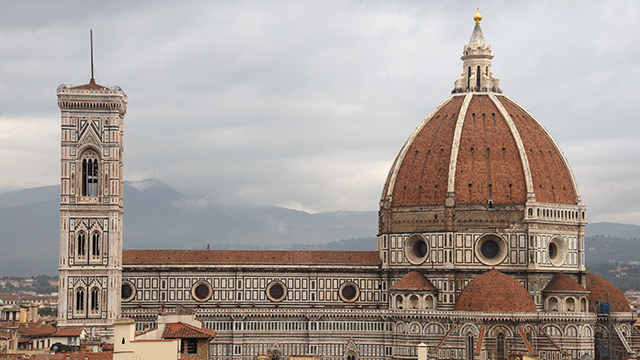Today, economic and social growth is driven by disruption. New approaches displace the old with breathtaking speed. Surely the world needs more leaders, thinkers and practitioners who can span realms of knowledge, the more dissimilar and varied the better.
For individuals, groups, and organizations to thrive in today’s global economy, we think that radical diversity of thought is absolutely essential, and perfectly possible. As it is now, the domains of art and science remain too separate. The pieces are in place, however to bring them closer together through our education systems. It is a matter of recognizing the need and acting on it as an essential driver of the next wave of innovation in society.
Science and engineering encourage thinking that is logical, analytical, and geared toward solving well-defined problems. Innovation, however, requires some things that are more common in the arts: intuition, divergence, fantasy, and attentiveness to solutions that appear through practice.
The Brunelleschi Dome is a perfect example of this interdisciplinary balance at work. The dome was built in Florence 500 years ago at a time when art, science, and technology were one. There were fewer boundaries defining someone as an artist or a scientist. The best academic societies included individuals that excelled in multiple fields.
Filippo Brunelleschi had to tackle aesthetic and engineering problems — and also to invent and construct machines for transporting and maneuvering materials. He had to collaborate with hundreds of individuals. The result was spectacular: the first octagonal dome in history built without a temporary wooden supporting frame. It is still the largest brick and mortar dome in the world.
Brunelleschi was an Elon Musk or Steve Jobs of his time.
He performed optical-geometrical experiments that were pivotal in the development of systematic linear perspective — a means of reproducing three-dimensions in two, which became important not only in the development of European art, but our visualization technologies of today.
He also wrote poetry, designed settings for theatrical performances, broke new ground in the field of sculpture, painting, architecture, and engineering, and contributed to key areas that today we think of as science. But Brunelleschi was far from alone in Florence. Indeed, he died six years before the birth of Leonardo da Vinci, who has come to symbolize this type of interdisciplinary achievement.
The situation in Florence was hardly perfect. For one, women were excluded from those academic societies, and from an education that might have enabled them to participate in Brunelleschi’s culture. We recognize such shortcomings, but nonetheless see great value in emulating some aspects of Florentine invention.
In our education system today, engineers and scientists spend years learning a large body of established knowledge before being turned loose, usually at the graduate level, to explore new realms. Great science and engineering requires creativity, but this is often not sufficiently emphasized. It is perhaps for this reason that the cult of the college dropout as the inventor in a garage took root.
In contrast, disruptive thinking is often encouraged earlier in the arts. Students do not start with the theory of photography, dance or poetry, but with cameras, movement, and writing. The arts are of course rigorous and theorized, but the act of making is so essential to its practice that it breeds ever evolving forms of creative thinking.
Art encourages broad unstructured initial thinking, leading to outcomes that require painstaking attention to detail. This thinking structure is also the platform for developing innovative and creative technologies. Not all engineers will become artists, or all artists will become engineers, but we believe cross-fertilization of ideas across boundaries will trigger a new wave of creative thought.
We see students and faculty eager to operate in this intersectional space. “Data as Art” is a course led by faculty from the School of the Art Institute Chicago and Northwestern engineering involving artists and engineers in collaborative work translating complicated dataset information into stories and public exhibits — for example, making 15 years of Chicago Public Schools enrollment data come alive in terms of ease of public transportation.
A collaboration, rooted in a long-running program between Northwestern and the Art Institute of Chicago, resulted in a course and an award-winning exhibition featuring an ancient Roman-Egyptian mummy. It brought together Argonne National Lab, and Northwestern’s Block Museum of Art as well as students and faculty from classics, sound design, materials science, computer science, medicine, archeology, and art history.
Going right to the core of what we do, we explicitly recruit students and faculty members who have an entrepreneurial spirit, including the ability to recognize social or individual needs and develop the means to satisfy them. This activity requires empathy and imagination: the capacity to see the world through the eyes of others, and to imagine new ways of solving problems and meeting needs. We should strive for a left-brain right-brain approach, built around the idea of solving problems for which there is no obvious solution.
We are hardly alone in exploring the intersection of art, science and engineering. Stanford offers arts Catalyst Grants to faculty to enhance classroom experiences for undergraduate students. Yale has courses linking engineering and literature, engineering and musical instrument design, and haptics and avant-garde theater.
The moment to expand such initiatives is now. We see a growing number of students with the appetite and the dexterity skills to effectively navigate dissimilar academic spaces. And whereas electives have always granted flexibility to the engineering curriculum, today’s high school students work hard to gain the advanced placement credit that allows them to explore new and challenging ideas when they arrive on campus.
Recognizing and acting on the importance of blending art and science in education opens the door to the type of innovative thinking and doing that will help address some of the world’s most pressing problems. This, no doubt, will trickle into the workforce and organizations. Five hundred years after Brunelleschi, let’s re-embrace the boundary-busting interdisciplinarity he exemplifies.


